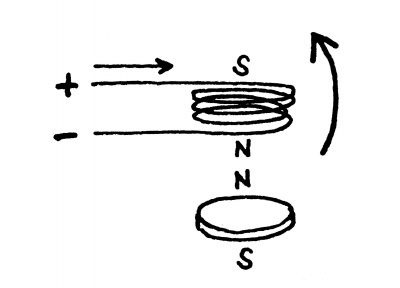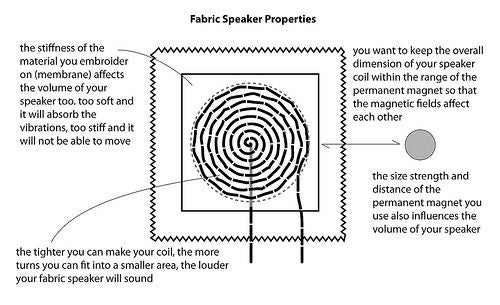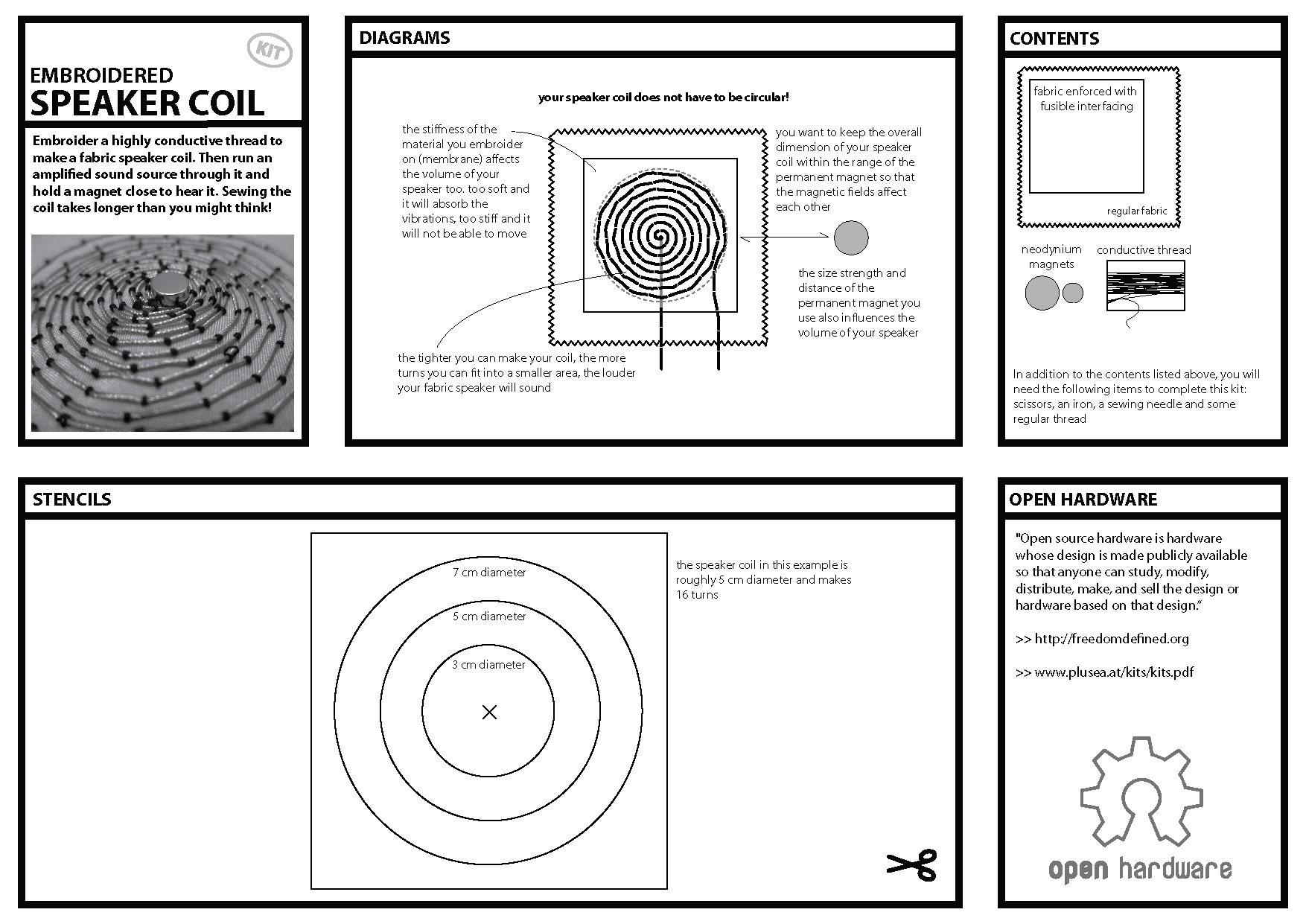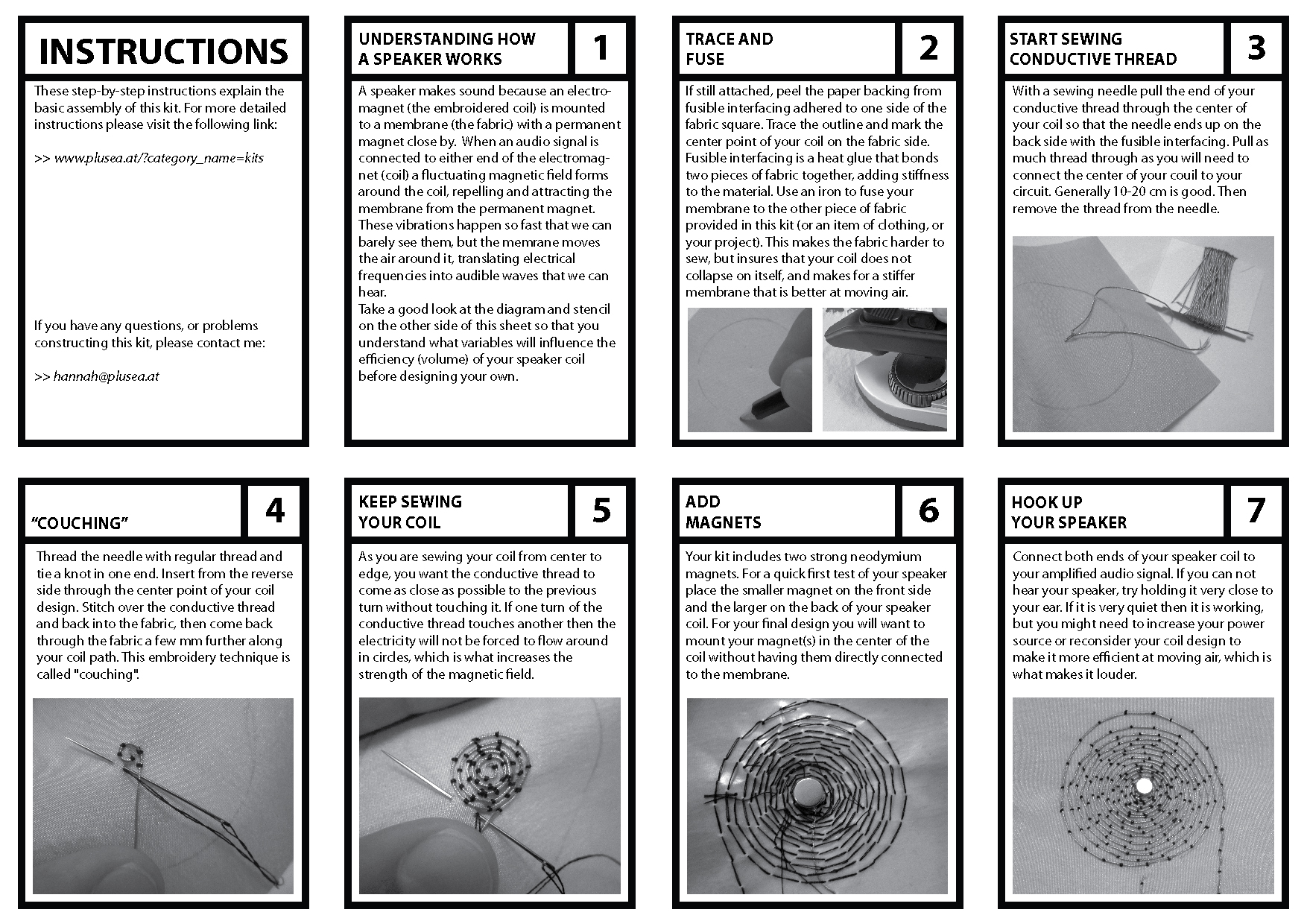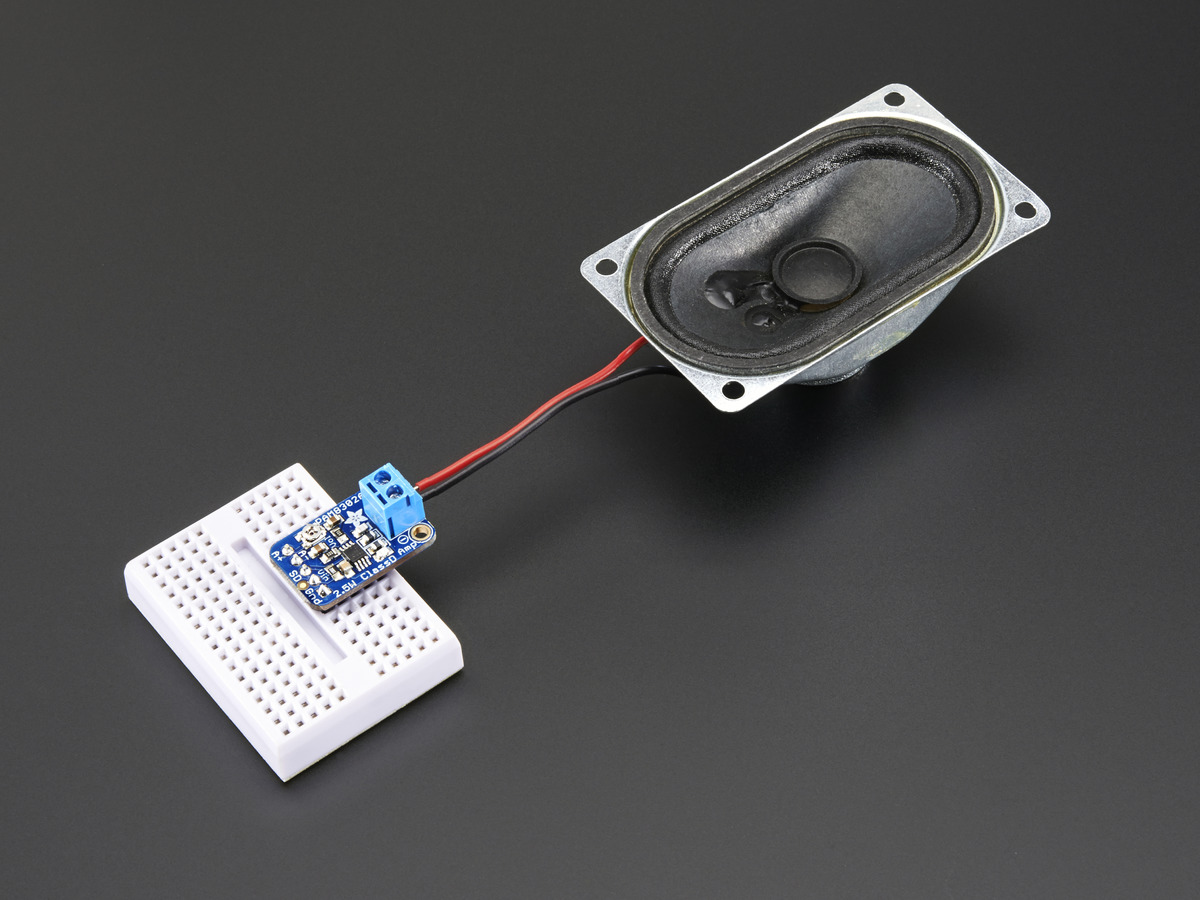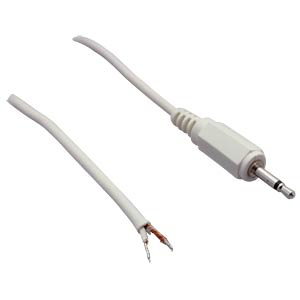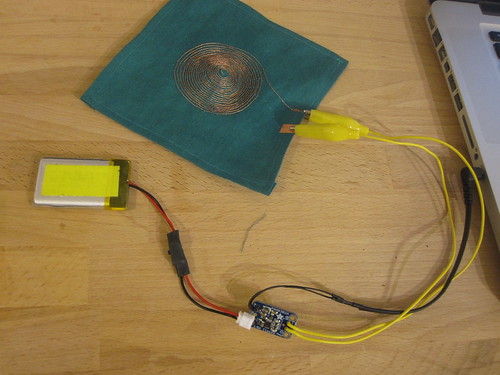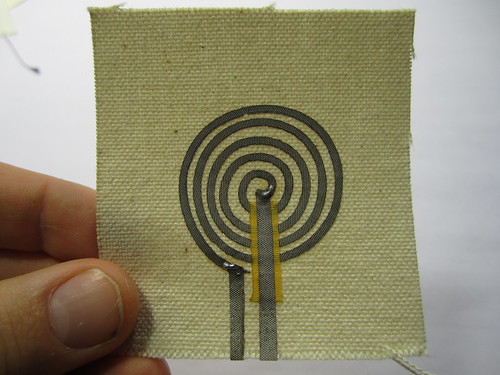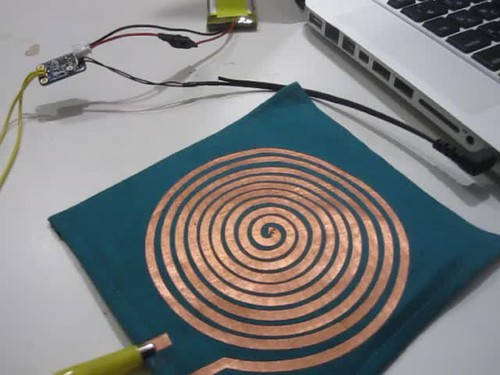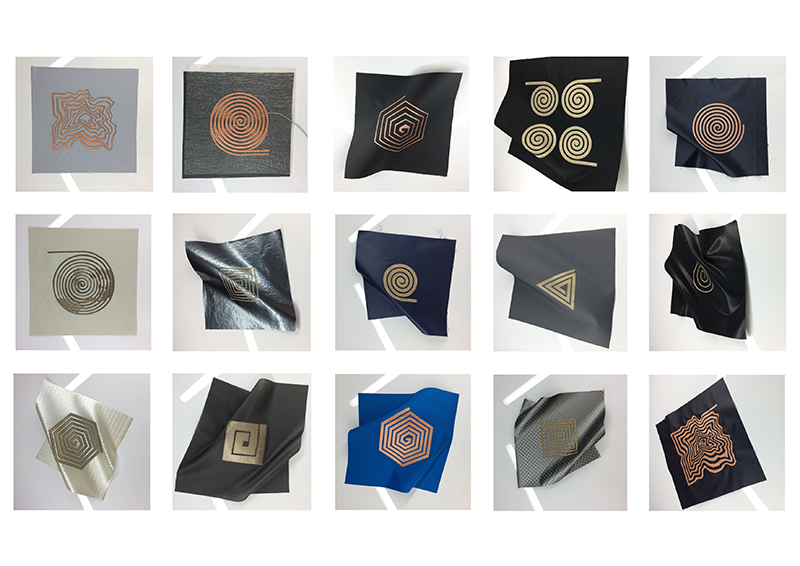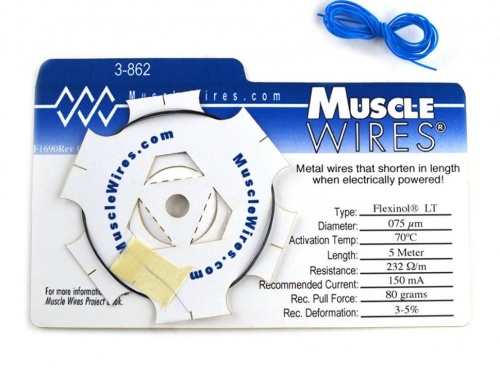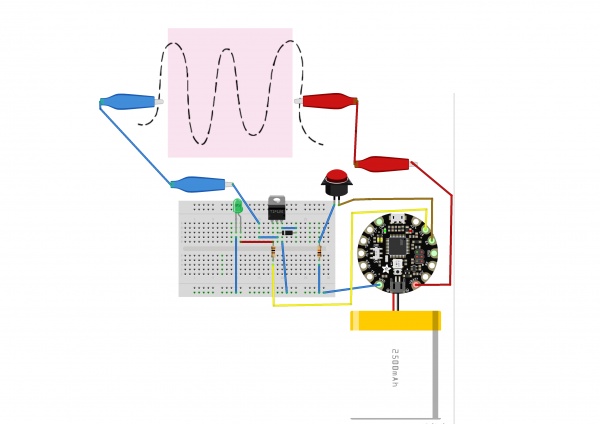Difference between revisions of "Textile Actuators"
| Line 194: | Line 194: | ||
After the wire is annealed, if you give around 1 amp current through the Nitinol wire, | After the wire is annealed, if you give around 1 amp current through the Nitinol wire, | ||
| − | the wire will heat up to a transform temperature(around 40- | + | the wire will heat up to a transform temperature(around 40-70°C) and the wire will return to the "programmed" shape. |
to control the memory wire, you can use the circuit we learned the previous week on Thermochromic textiles. | to control the memory wire, you can use the circuit we learned the previous week on Thermochromic textiles. | ||
Revision as of 14:38, 26 March 2020
Electromagnetic Coil
1. Flapping Wings
{{#ev:youtube|https://www.youtube.com/watch?time_continue=2&v=jrPeOXibGUk&feature=emb_logo}}
This video demonstrates how the combination of an electromagnetic coil and a permanent magnet can be used to create a “flapping” movement……
How it works:
Electromagnetic coils are made of enameled wire coated with a very thin layer of insulation.
When the current flowing through the coil, it generates an electromagnetic field.
In this case, either attracts or repels a permanent magnet to create movements.
Changing the direction of the turns of a coil and the polarity of the DC power source can change the polarity of the magnet.
How to make it:
you will need:
Materials:
cotton fabric, silk fabric, cotton thread, neodymium magnet (1cm diameter, 2mm high, axially magnetized), enameled copper wire (0.01mm diameter), copper tape, solder
Tools:
sewing needle, pinking shears, scissors, soldering iron, tweezers, cutter knife, 7mm diameter shaft (end of pen or round tool)
Follow the [|Step-by-Step Instructions]
2. Soft Speaker
UNDERSTANDING HOW A SPEAKER WORKS
A speaker makes sound because an electromagnet (the embroidered coil) is mounted to a membrane (the fabric) with a permanent magnet close by.
When an audio signal is connected to either end of the electromagnet (coil) a fluctuating magnetic field forms around the coil,
repelling and attracting the membrane from the permanent magnet. These vibrations happen so fast that we can barely see them,
but the membrane moves the air around it, translating electrical frequencies into audible waves that we can hear.
Take a good look at the diagram and stencil on the other side of this sheet so that you understand what variables will influence
the efficiency (volume) of your speaker coil before designing your own.
1.Embroidered Fabric Speaker
{{#ev:youtube|https://www.youtube.com/watch?time_continue=2&v=sJDrZaG-K2M&feature=emb_logo}}
How to make it:
Take a good look at the diagram and stencil on the other side of this sheet so that you understand what variables will influence the efficiency (volume) of your speaker coil before designing your own.
we have [|Embroidered speaker kits] at the interaction station.
After we finish the construction of the soft speaker,
We now need an audio amplifier to amplifier the audio signal in order to play it via the soft speaker.
[Audio Amplifier](we use this amplifier from adafruit)
connect the two-wire from the soft speaker the same as a normal speaker(can be connected in any direction):
and power the amplifier from 2.0V-5.5VDC to VIN and GND pin.
connect a mono audio jack to A- A+ pin.
and it is done!
2.Conductive Fabric Speaker
You can also make a soft speaker with other techniques:
1.Conductive fabric lasercut and fused to paper.
2. Conductive fabric lasercut and fused to canvas.
3.copper conductive fabric cut with Vinyl cutter, then fused onto fabric with fusible interfacing.
You can create variations of patterns:
How to make it:
Follow [Fabric Speaker Step by step guide:]
Example of works:
1. Draping Sound-EJTech
{{#ev:vimeo|https://vimeo.com/348487065}}
2. 48 channel textile sound system
{{#ev:vimeo|https://vimeo.com/364045010}}
3.Sound_Embroidery
{{#ev:vimeo|https://vimeo.com/184542929}}
4. sftspkr_No.1 - Space Oddity Sound System {{#ev:vimeo|https://vimeo.com/107454046}}
5.Soft Sound {{#ev:vimeo|https://vimeo.com/205792057}}
Nitinol Wire
Nitinol Wire is a metal alloy of nickel and titanium.
It exhibits the shape memory effect and superelasticity at different temperatures.
Nitinol alloys exhibit two closely related and unique properties:
The shape memory effect and superelasticity (also called pseudoelasticity).
1. Shape memory is the ability of nitinol to undergo deformation at one temperature,
stay in its deformed shape when the external force is removed, then recover its original,
undeformed shape upon heating above its "transformation temperature".
Nitinol is deformed at a low temperature, and heated to recover its original shape through the Shape Memory effect.
2. Superelasticity is the ability for the metal to undergo large deformations and immediately return to its undeformed shape upon removal of the external load.
Whether nitinol behaves with the shape memory effect or superelasticity depends on whether it is above the transformation temperature of the specific alloy.
Below the transformation temperature, it exhibits the shape memory effect, and above that temperature, it behaves superelastically
1. Musle wire
if you want to use Nitinol Wire as muscle wire:
These small diameter wires contract (typically 2% to 5% of their length) like muscles when electrically driven or heated.
Although, the contraction might seem small, it is accompanied by such force that it can easily be applied through levers and linkages to achieve much larger movements.
{{#ev:youtube|https://www.youtube.com/watch?v=DW4WaTmoZ3c}}
{{#ev:vimeo|https://vimeo.com/33861667}}
2. Memory Wire
The wire was pre-annealed to be plastic. Raw Nitinol is usually superelastic.
If you want shape memory wire then you must anneal the raw wire around 500°C.
you can "program" a Memory wire by holding it to the desired shape and anneal the wire around 500°C.
You can do this with a hot air blower.
for thin wires, the heating time should be reduced accordingly.
{{#ev:youtube|https://www.youtube.com/watch?v=MGMH-R7s2oM}}
{{#ev:youtube|https://www.youtube.com/watch?v=4Yi4epJ83EE}}
After the wire is annealed, if you give around 1 amp current through the Nitinol wire,
the wire will heat up to a transform temperature(around 40-70°C) and the wire will return to the "programmed" shape.
to control the memory wire, you can use the circuit we learned the previous week on Thermochromic textiles.
Nitinol and Felt (test 4): the "jellyfish"
{{#ev:youtube|https://www.youtube.com/watch?time_continue=1&v=4JQl8_D-370&feature=emb_logo}}
{{#ev:youtube|https://www.youtube.com/watch?v=F8L_etiBGMc&feature=emb_rel_end}}
